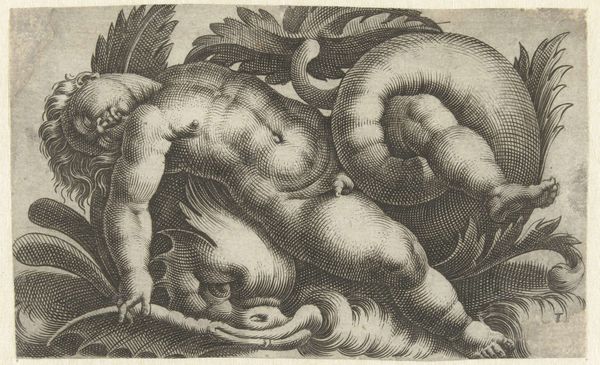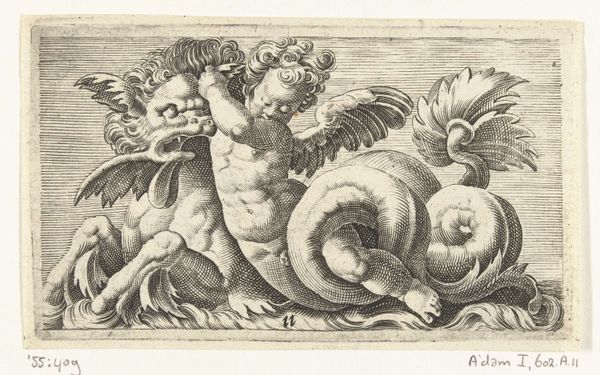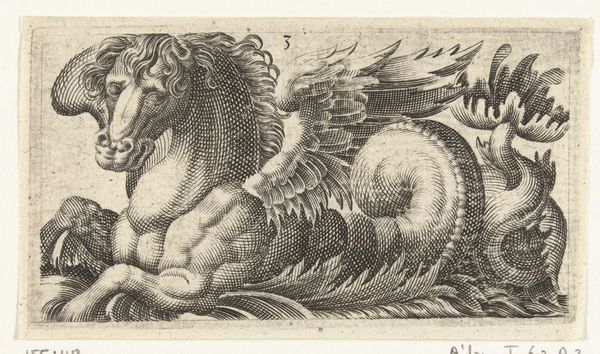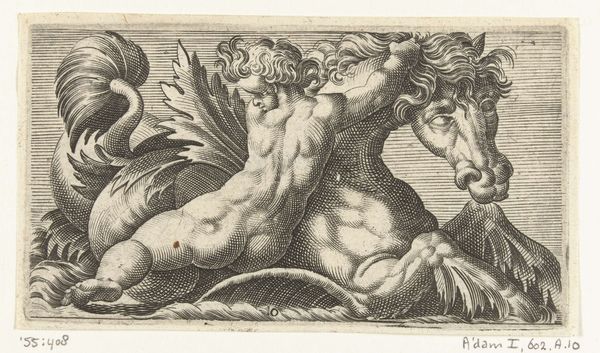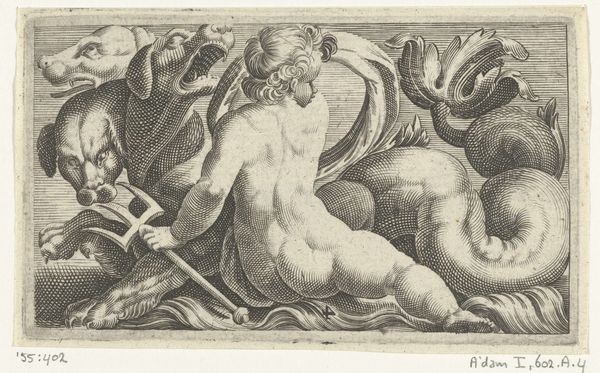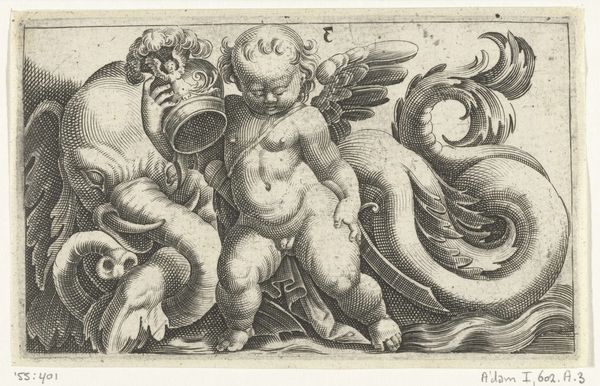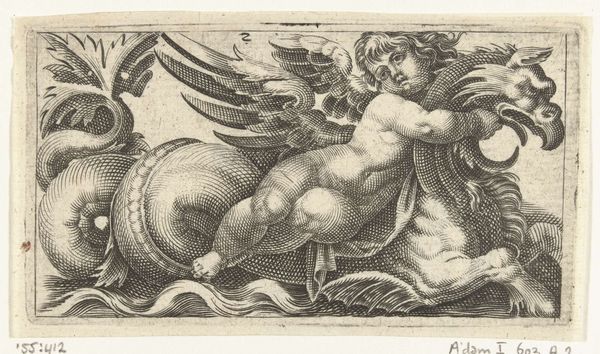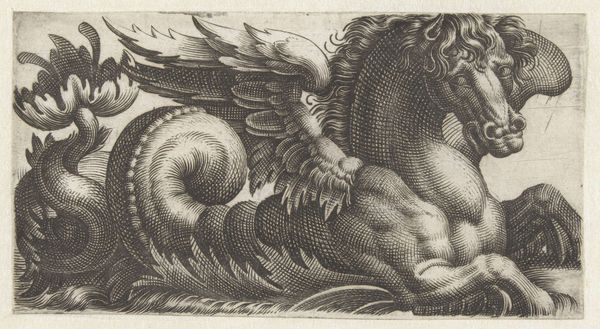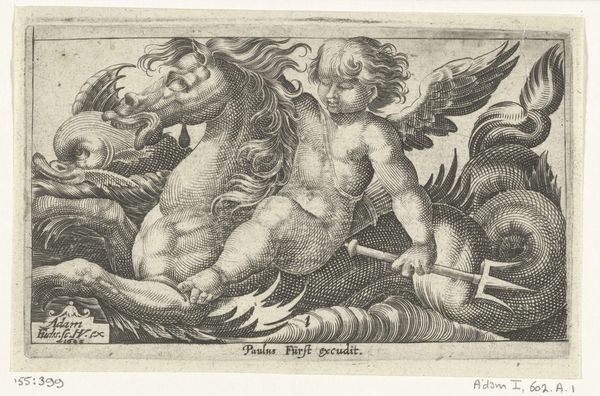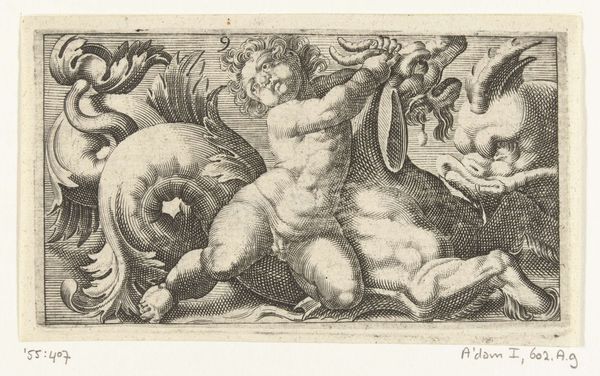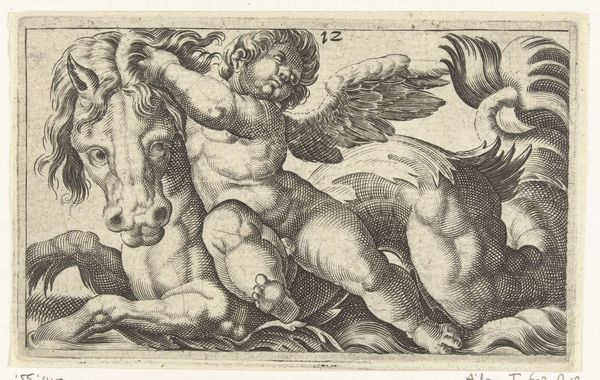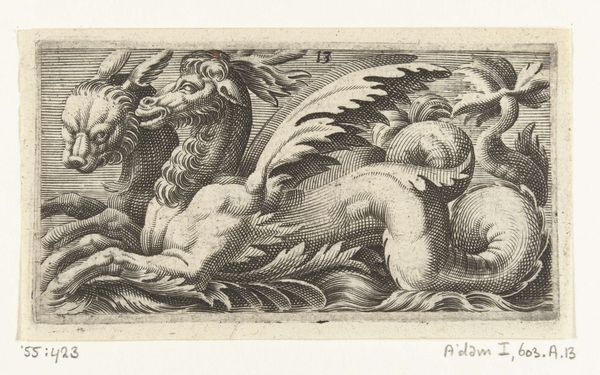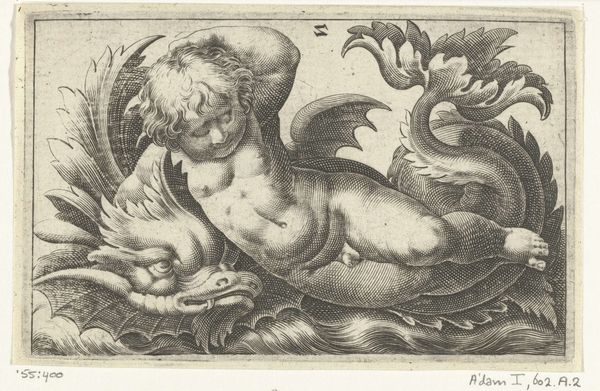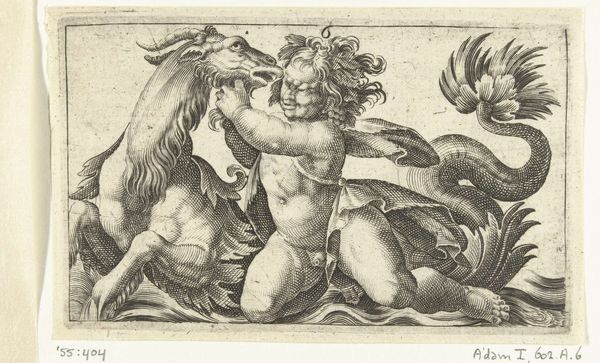
print, engraving
# print
#
mannerism
#
figuration
#
11_renaissance
#
genre-painting
#
history-painting
#
nude
#
engraving
Dimensions: height 77 mm, width 120 mm
Copyright: Rijks Museum: Open Domain
This is Adam Fuchs's "Slapende putto op een dolfijn," made sometime before 1606. Its display here in the Rijksmuseum has as much to do with institutional history as with the artist’s intentions. This image of a sleeping putto on a dolphin likely served as a decorative print. During the 16th century, such prints became increasingly popular in Europe, particularly in the Dutch Republic, for both aesthetic and symbolic purposes. The image draws from classical mythology, where dolphins were often seen as symbols of guidance and protection. Combined with the putto, a symbol of innocence and love, the image likely conveyed a message of safe passage or divine favor. Prints were cheap and portable. They circulated widely, shaping tastes and spreading ideas. By studying the print collections and archives of institutions such as the Rijksmuseum, we can trace not only the history of art but also the social and cultural values that shaped its production and reception.
Comments
No comments
Be the first to comment and join the conversation on the ultimate creative platform.
